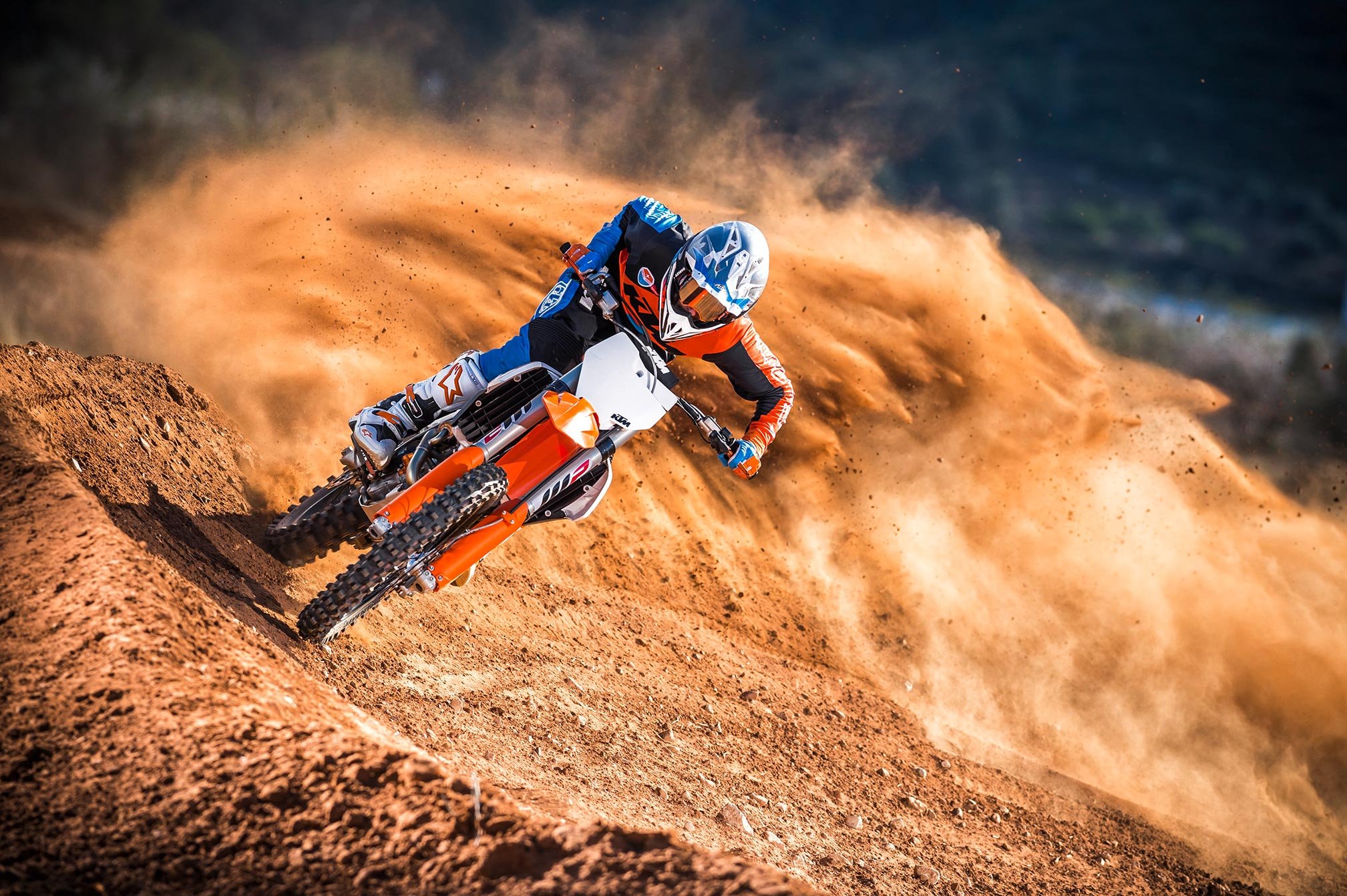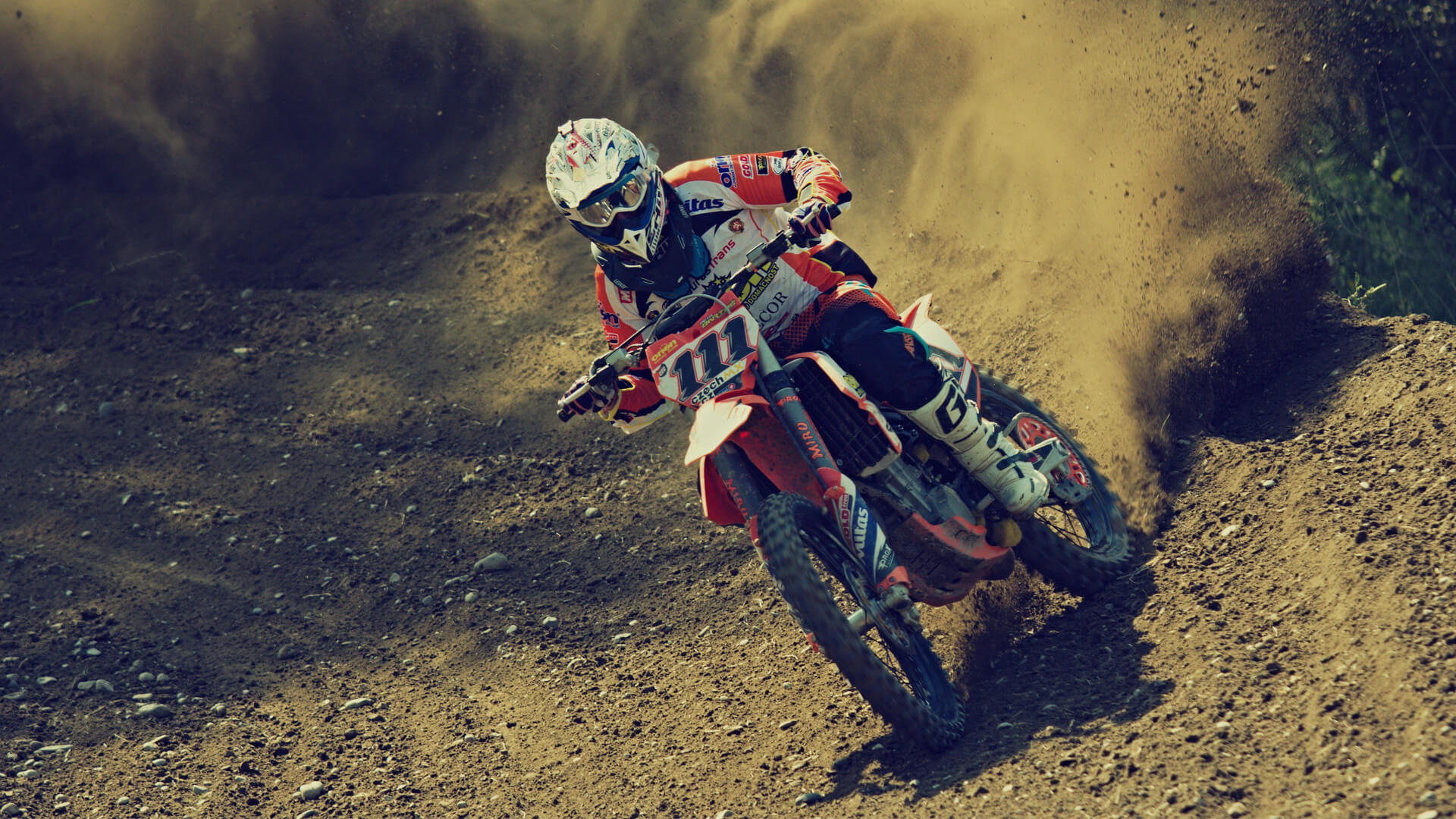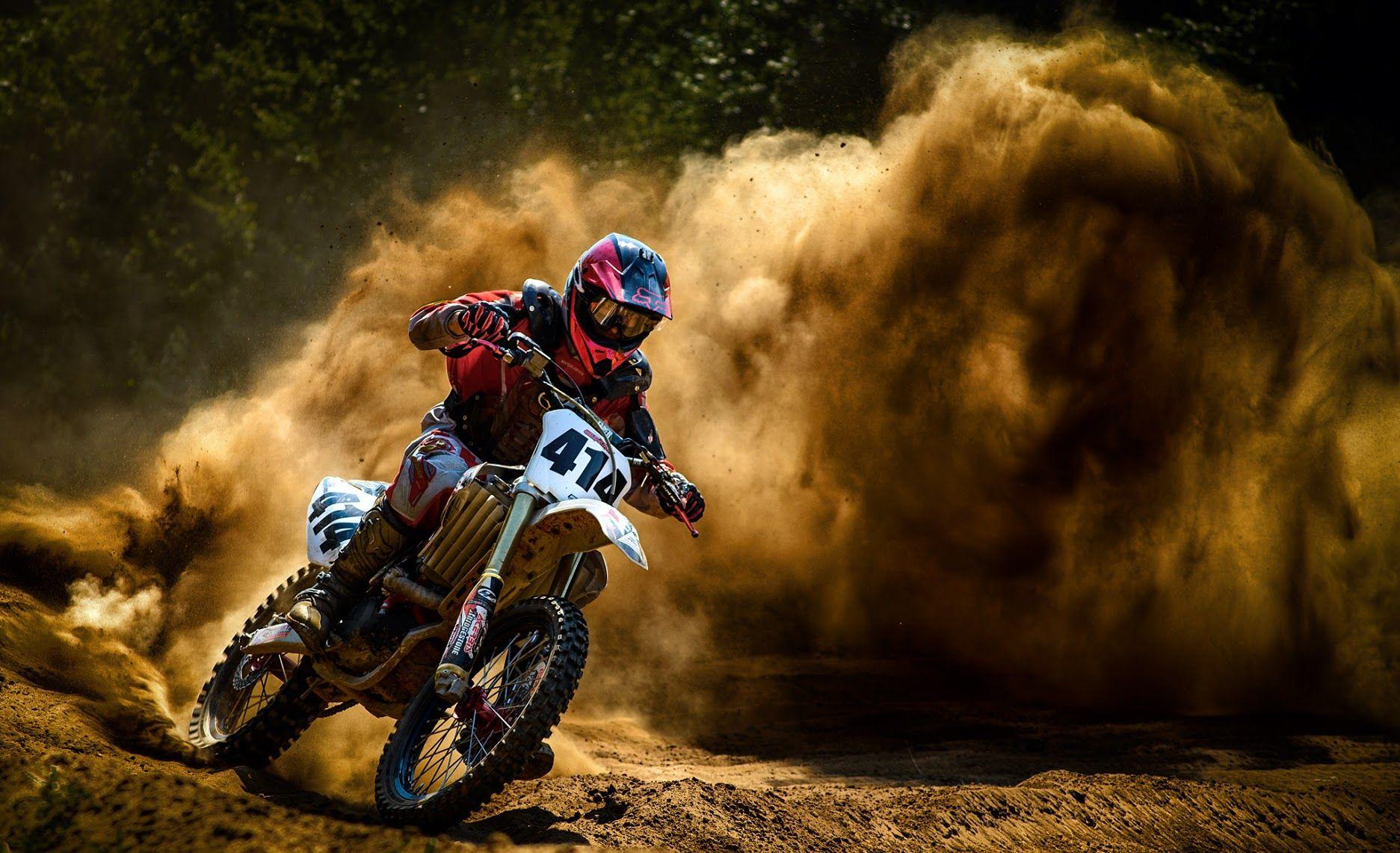Motocross and dirtbiking are two popular off-road motorcycling activities that often get confused with one another. While motocross is a form of dirtbiking, there are notable differences between the two that impact how riders approach each sport. For those new to the world of off-road motorcycling, understanding these distinctions is key to choosing the right path, whether for recreation or competition.

Motocross is a highly competitive and intense form of dirtbiking. It involves racing on off-road tracks with various obstacles like jumps, sharp turns, and rugged terrain. Originating in Europe in the early 20th century, motocross has evolved into a global sport with professional championships and dedicated fan bases around the world.
The Origins and History of Motocross
Motocross can trace its roots back to early off-road motorcycle trials that started in Britain in the 1920s. These early races were held on rough and uneven terrain, challenging riders to test their skills on motorcycles that were not yet specialized for the task. Over time, these races became more structured, and in the 1930s, the term “motocross” was born—a combination of the French word for motorcycle, moto, and the cross-country nature of the race, cross.
By the 1950s, motocross began to take off as a formal sport in Europe, with specialized bikes being developed to meet the needs of these demanding races. As technology improved, the sport spread to the United States and other parts of the world. In 1972, the American Motorcyclist Association (AMA) launched the AMA Motocross Championship, cementing the sport’s popularity in North America.
What Makes Motocross Unique?
Motocross differs from general dirtbiking in that it is a highly structured and competitive sport. Riders participate in races on closed-circuit tracks that are specifically designed to test their skill, speed, and endurance. These tracks typically feature:
- Jumps: Large, man-made jumps that send riders soaring through the air, requiring precise timing and control to land safely.
- Tight corners: Sharp turns that force riders to quickly shift their body weight and adjust their speed to navigate successfully.
- Rough terrain: Uneven surfaces, mud, sand, and other challenges that make maintaining control of the bike difficult.
The bikes used in motocross are specially designed for these conditions. They are typically lighter and more powerful than standard dirtbikes, allowing for quicker acceleration and more control on tough terrain. Motocross bikes are built for short bursts of speed and agility, which is necessary in racing conditions.
Popular Motocross Competitions
Several competitions have become cornerstones of the motocross world, attracting both amateur and professional riders. Some of the most prominent motocross events include:
- AMA Supercross: A series of races held in the United States that feature indoor motocross events. Supercross tracks are shorter than traditional motocross tracks, but they are packed with more obstacles and jumps.
- FIM Motocross World Championship: The premier motocross competition held internationally, featuring the best riders from around the world.
- Motocross des Nations: A team-based international event where countries compete against each other for the top spot in motocross.
These competitions highlight the skill, endurance, and sheer bravery required to excel in motocross. It is a sport that combines precision, speed, and strength, making it one of the most thrilling forms of dirtbiking.

What is Dirtbiking?
Dirtbiking is a broader term that encompasses any kind of off-road motorcycle riding. While motocross is a form of dirtbiking, dirtbiking itself can take many forms, ranging from leisurely trail rides to competitive enduro racing. The diversity in terrain, equipment, and goals means that dirtbiking is accessible to riders of all skill levels, from beginners to seasoned veterans.
Defining Dirtbiking
At its core, dirtbiking involves riding a motorcycle on unpaved or natural terrain, such as dirt trails, sand dunes, forest paths, or rocky mountainsides. Unlike motocross, which takes place on a closed circuit, dirtbiking typically occurs in open environments that may not be pre-designed or groomed for riding.
Dirtbiking offers riders the freedom to explore varied landscapes and enjoy the natural environment while testing their motorcycle skills. Riders may encounter steep hills, narrow paths, water crossings, and other natural obstacles that challenge their ability to navigate rough terrain.
Types of Dirtbiking
Dirtbiking comes in several different forms, each offering a unique experience. Here are the main types of dirtbiking that enthusiasts participate in:
- Trail Riding: One of the most popular forms of dirtbiking, trail riding involves exploring off-road trails in natural environments. These trails can vary in difficulty, from flat, easy-to-navigate paths to more challenging, technical routes with steep climbs and rugged terrain. Trail riding is often recreational, with riders enjoying the scenery and adventure rather than competing.
- Enduro Racing: Enduro races are long-distance off-road events that test a rider’s endurance, skill, and ability to navigate through natural obstacles. Enduro racing differs from motocross in that it takes place on a variety of terrains, and the focus is on endurance rather than speed. Riders must complete a designated course within a set time, and the events can last for hours or even days.
- Dual-Sport Riding: Dual-sport bikes are designed for both off-road and on-road riding, giving riders the flexibility to switch between paved roads and dirt trails. This form of dirtbiking is ideal for adventure seekers who want to ride their motorcycles in diverse environments, from highways to remote off-road locations.
- Adventure Riding: Adventure riding is all about long-distance exploration, often on dirt roads or unpaved trails that connect remote locations. Riders typically use larger motorcycles designed for comfort and carrying gear, making it a great option for multi-day trips through challenging terrain.
Types of Dirtbikes
Just as there are various types of dirtbiking, there are also different types of bikes designed for specific purposes. Here’s a look at the most common types of dirtbikes:
| Type of Dirtbike | Description |
|---|---|
| Trail Bikes | These are versatile bikes designed for off-road trail riding. They are generally durable and easy to handle. |
| Enduro Bikes | Built for long-distance racing, these bikes have larger fuel tanks and stronger suspension systems. |
| Motocross Bikes | Light and agile, motocross bikes are designed for racing on closed tracks with jumps and obstacles. |
| Dual-Sport Bikes | Street-legal dirtbikes that can handle both paved and unpaved terrain, making them ideal for adventure riding. |
Each type of dirtbike has specific features tailored to the terrain and type of riding it is intended for, whether it be high-speed motocross races or long-distance adventure rides.
Recreational vs. Competitive Dirtbiking
One of the main distinctions in dirtbiking is whether the rider is engaging in the sport recreationally or competitively. Recreational dirtbiking is often about enjoying the outdoors, pushing personal limits, and developing riding skills in a more relaxed environment. It’s common for people to take their dirtbikes out on weekends to ride trails or explore off-road areas without the pressure of competition.
In contrast, competitive dirtbiking—like motocross, enduro racing, or hare scrambles—puts riders in direct competition with others. These events challenge riders to complete courses faster, handle technical obstacles, or ride long distances under timed conditions.
Riders who start with recreational dirtbiking often transition to competitive events as their skills and confidence grow. It’s common for motocross riders to begin by casually riding trails before moving into organized competitions.

Motocross vs. Dirtbiking: Key Differences
Although motocross is a form of dirtbiking, several key differences set it apart from other types of off-road motorcycling. Understanding these distinctions will help you decide which type of riding is best suited to your goals and interests.
Terrain and Track Differences
One of the most significant differences between motocross and general dirtbiking lies in the terrain and track conditions. Motocross races take place on closed-circuit tracks that are specifically designed for competitive racing. These tracks are usually man-made and include various technical features to challenge riders:
- Jumps: High ramps that launch riders into the air, requiring precise control over the bike’s speed and trajectory.
- Turns: Tight, often banked corners that demand sharp braking and quick acceleration to maintain speed without losing control.
- Whoops: Series of small, consecutive bumps that force riders to rapidly adjust their body position and bike suspension to maintain speed and balance.
- Obstacles: Other man-made features, such as tabletop jumps, rhythm sections, and sand sections, which test a rider’s versatility.
In contrast, dirtbiking generally takes place on natural terrain, such as backcountry trails, desert dunes, or forest paths. The open environment of dirtbiking means riders may encounter a wide variety of terrain, from rocky hills to sandy valleys, often without the predictability of a groomed track. Natural obstacles, such as tree roots, boulders, and streams, add to the challenge of navigating through rugged landscapes.
Bikes and Equipment
Both motocross and dirtbiking require specialized bikes, but the specific requirements differ based on the type of riding. Motocross bikes are typically lightweight and powerful, designed for short, intense bursts of speed. Key features of a motocross bike include:
- Light frame: Typically made from aluminum or other lightweight materials to allow for quick handling and agility.
- Stiff suspension: Optimized to handle the large jumps and rough landings that are common in motocross racing.
- High torque engines: Designed to deliver quick acceleration out of turns and over jumps, making it easier to navigate the tight confines of a track.
Dirtbikes, on the other hand, vary depending on the type of riding, but are generally built for durability and endurance rather than speed. They often have:
- Sturdy frame: Built to handle long hours of riding through unpredictable terrain.
- Adjustable suspension: Softer suspension systems to absorb bumps and shocks from riding over rocks, tree roots, and uneven surfaces.
- Broader gear ratios: Designed to handle a wide range of speeds, from slow, technical riding to faster stretches of open trail.
Purpose and Experience
The purpose behind motocross and dirtbiking also differs. Motocross is primarily a competitive sport, with riders aiming to complete laps around a track faster than their opponents. It is fast-paced, intense, and physically demanding, requiring riders to develop quick reflexes, endurance, and the ability to handle the technical challenges of a closed-circuit race.
In contrast, dirtbiking is often more about the adventure and exploration of new landscapes. While some forms of dirtbiking, like enduro racing, involve competition, many dirtbikers ride simply for the joy of being outdoors and testing their skills on natural terrain. The experience is often less structured, with riders taking on varying levels of difficulty based on the environment they are riding in.
For someone looking for an adrenaline-fueled, competitive experience, motocross is likely the best option. On the other hand, if you enjoy the idea of riding through forests, mountains, or deserts at your own pace, dirtbiking offers a more flexible and exploratory approach.

Is Motocross Considered a Form of Dirtbiking?
The short answer is yes—motocross is indeed a form of dirtbiking. However, while motocross fits within the broader category of dirtbiking, it represents a specialized and more competitive version of the sport. Motocross is typically defined by its emphasis on racing, skill, and high-performance machinery, whereas dirtbiking encompasses a wide range of off-road riding styles, from casual trail riding to adventure biking.
Overlap Between Motocross and Dirtbiking
There is a substantial overlap between motocross and dirtbiking, as both involve riding motorcycles off-road and tackling challenging terrain. Shared elements between motocross and dirtbiking include:
- Motorcycle handling skills: Both sports require riders to be proficient at handling a motorcycle in uneven, unpredictable environments. Riders must learn to control their bikes on dirt, mud, sand, and rocks.
- Physical demands: Whether racing in motocross or riding trails for hours on a dirtbike, both activities place significant physical demands on the rider. Strength, endurance, and balance are key components in successfully navigating off-road conditions.
- Gear and equipment: Riders in both motocross and dirtbiking use similar protective gear, such as helmets, boots, gloves, and body armor. This gear is designed to protect riders from falls, impacts, and abrasions common in off-road riding.
However, while the core skills are similar, motocross takes these elements to a more extreme level. The closed-circuit nature of motocross tracks requires higher speeds, sharper turns, and more technical riding than what is generally encountered in open-terrain dirtbiking. Additionally, the high jumps and intense competition of motocross demand a level of precision and focus that is often less critical in casual dirtbiking.
How to Transition from Dirtbiking to Motocross
For many dirtbike riders, motocross represents the next step in developing their riding skills and pursuing competitive goals. Transitioning from dirtbiking to motocross is entirely possible, but it requires some adjustments and additional training.
Here are some key steps for making the transition from dirtbiking to motocross:
- Developing racing skills: In motocross, it’s not just about riding well—it’s about riding faster and more efficiently than your competitors. Riders transitioning to motocross should focus on improving their cornering speed, learning how to tackle jumps, and mastering quick acceleration out of turns.
- Track practice: Unlike the open trails or varied terrain of dirtbiking, motocross tracks are designed with specific features to challenge riders. Spend time on dedicated motocross tracks to get used to the environment, including the layout of jumps, whoops, and berms.
- Strength and conditioning: Motocross races are physically demanding, often requiring bursts of power and quick reflexes. Riders should focus on building upper body strength, core stability, and leg endurance to maintain control over the bike during intense races.
- Adjusting to motocross bikes: While both motocross bikes and dirtbikes share some similarities, motocross bikes are more agile, lighter, and built for speed. Transitioning riders should familiarize themselves with the power-to-weight ratio of motocross bikes and practice using them in race conditions.
Ultimately, making the leap from dirtbiking to motocross requires dedication, practice, and a willingness to take on new challenges. However, the foundational skills learned in dirtbiking provide an excellent starting point for those who wish to enter the world of competitive motocross.